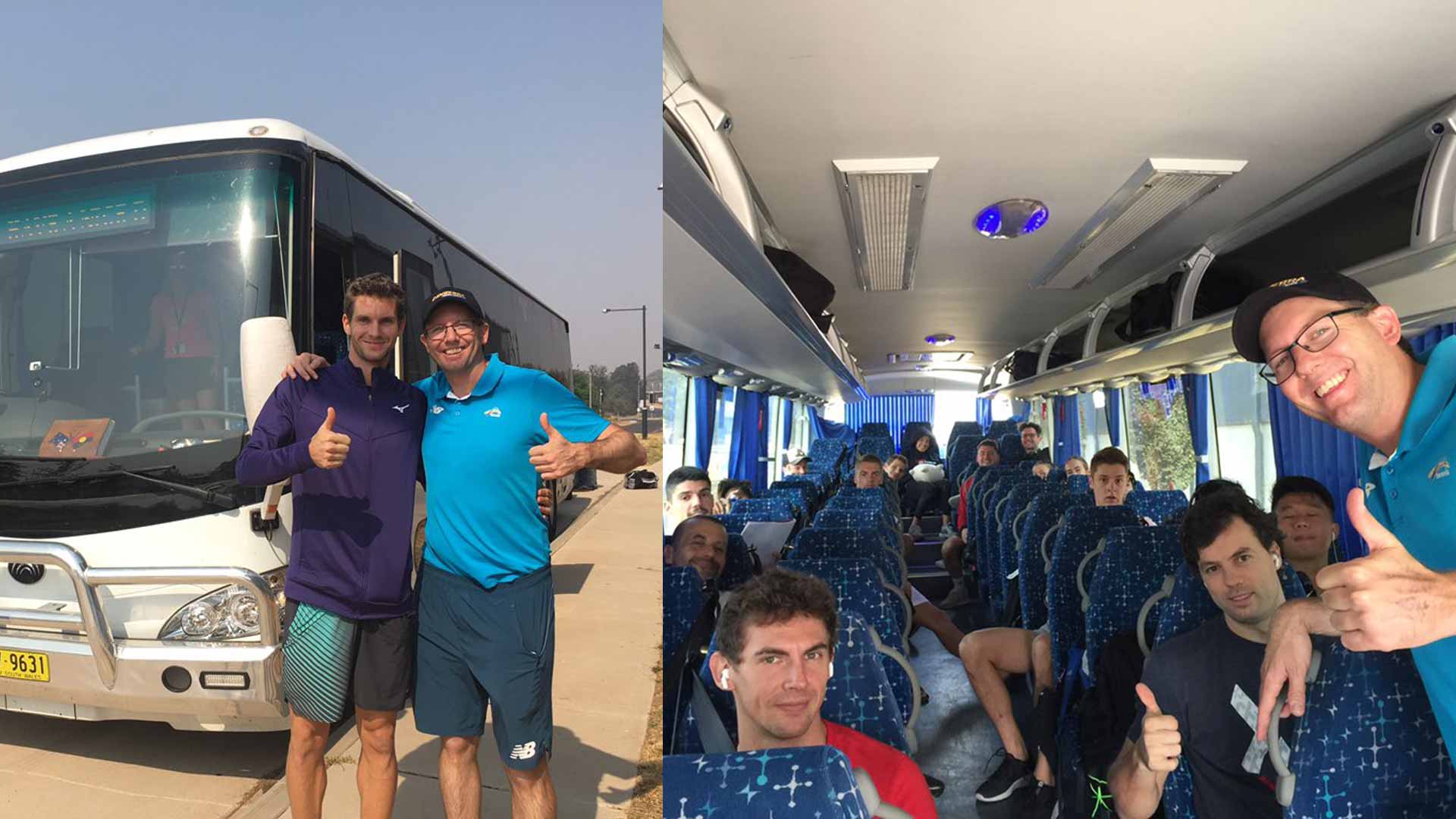The ATP Tour heads into the second week of its 2020 season with two ATP 250 events on deck. Italian Fabio Fognini is the top seed at the ASB Classic, while #NextGen ATP Canadian Felix Auger-Aliassime leads the way at the Adelaide International.
Draws: Auckland | Adelaide
10 THINGS TO WATCH IN AUCKLAND
1. Top Four: The top four seeds at this event – Fabio Fognini, Denis Shapovalov, Karen Khachanov, and John Isner – are all inside the Top 20 of the FedEx ATP Rankings.
2. Italy Looks For Breakthrough: No Italian player has ever reached the semi-finals in Auckland in the Open Era. Top seed Fognini is the only Italian to have reached the quarter-finals twice, in 2016 and last year.
3. Air Shapo: #NextGenATP Canadian Shapovalov opened his year with victories over Stefanos Tsitsipas and Alexander Zverev at the ATP Cup. He also stretched World No. 2 Novak Djokovic to a third-set tie-break.
4. Khachanov’s Hot Streak: The 23-year-old Russian went 4-1 in singles action at the ATP Cup. Khachanov is making his third appearance in Auckland.
5. Auckland Master: Two-time champion Isner (2010, 2014) boasts a 14-6 win-loss record at this event. His 2010 victory was the first ATP Tour singles title of his career.
6. Sinner’s Delight: Jannik Sinner is making his first tour-level appearance since capturing last year’s Next Gen ATP Finals (d. De Minaur). The 18-year-old Italian received a main draw wild card.
7. Defending Champion: American Tennys Sandgren returns to defend his maiden ATP Tour title. He defeated Brit Cameron Norrie in last year’s final, who is also back in New Zealand this year.
8. Hurkacz On A High: Sixth seed Hurkacz won all three of his singles matches for Team Poland at the ATP Cup. The 22-year-old defeated Dominic Thiem, Diego Schwartzman and Borna Coric.
9. First-Time Winners: Six of the 15 players who captured their maiden ATP Tour titles last year are in the draw. They include Sandgren, Shapovalov (Stockholm), Hurkacz (Winston-Salem), Radu Albot (Delray Beach), Adrian Mannarino (’s-Hertogenbosch) and Lorenzo Sonego (Antalya).
10. Doubles Draw: New pairing John Peers/Michael Venus are the top seeds at this event. Local favourite Venus took the title in 2016 with Mate Pavic. Pavic unites with Bruno Soares as the second seeds. Rohan Bopanna/Henri Kontinen and Austin Krajicek/Franko Skugor round out the top four seeds.

10 THINGS TO WATCH IN ADELAIDE
1. New Kid In Town: Adelaide is a new addition to the Aussie swing this season. The city last held an ATP Tour event in 2008.
2. United Nations: Players representing 14 different countries are in the singles main draw. Australia leads the pack with four players.
3. Felix’s Momentum: Auger-Aliassime is the second seed and highest-ranked player in the draw after with the withdrawal of top-seeded Aussie and fellow #NextGenATP player Alex de Minaur. The Canadian started the 2019 season ranked No. 108, but blasted into the Top 25 on 27 May, while he was still 18 years old. On that date, he became the youngest player ranked inside the Top 25 since Aussie Lleyton Hewitt on 13 December 1999.
4. Rublev On A Roll: Andrey Rublev will come to Adelaide directly after winning the singles title in Doha on Saturday (d. Moutet). The 22-year-old Russian has won 15 of his past 17 matches, which includes a run to the title last October in his hometown of Moscow (d. Mannarino).
5. First-Time Winners: Five players who captured their first tour-level title last year are in the main draw. They include Juan Ignacio Londero (Cordoba), Reilly Opelka (Long Island), Laslo Djere (Rio de Janeiro), Cristian Garin (Houston) and Taylor Fritz (Eastbourne)
6. ATP Cup to Adelaide: Eleven players in Adelaide’s main draw represented their countries in the inaugural ATP Cup. Fourth seed Pablo Carreno Busta and Albert Ramos-Vinolas were part of Team Spain, which finished runner-up (l. to Serbia).
7. From Captain To Player: Two players who served as team captains at the ATP Cup will focus on their own games this week. Frenchman Gilles Simon competes in singles and Hewitt is in the doubles draw with fellow Aussie Jordan Thompson.
8. Doubles Draw: Reigning Wimbledon and US Open champions Juan Sebastian Cabal/Robert Farah are the top seeds in doubles. Lukasz Kubot/Marcelo Melo, reigning Roland Garros champions Kevin Krawietz/Andreas Mies and Ivan Dodig/Filip Polasek round out the top four seeds.
9. Veteran Verdasco: Spaniard Fernando Verdasco is the oldest player in the draw at age 36. He kicked off the new year with a quarter-final finish in Doha.
10. Aussies Gone Wild: #NextGenATP player Alexei Popyrin, Alex Bolt and James Duckworth received main draw wild cards this year.







